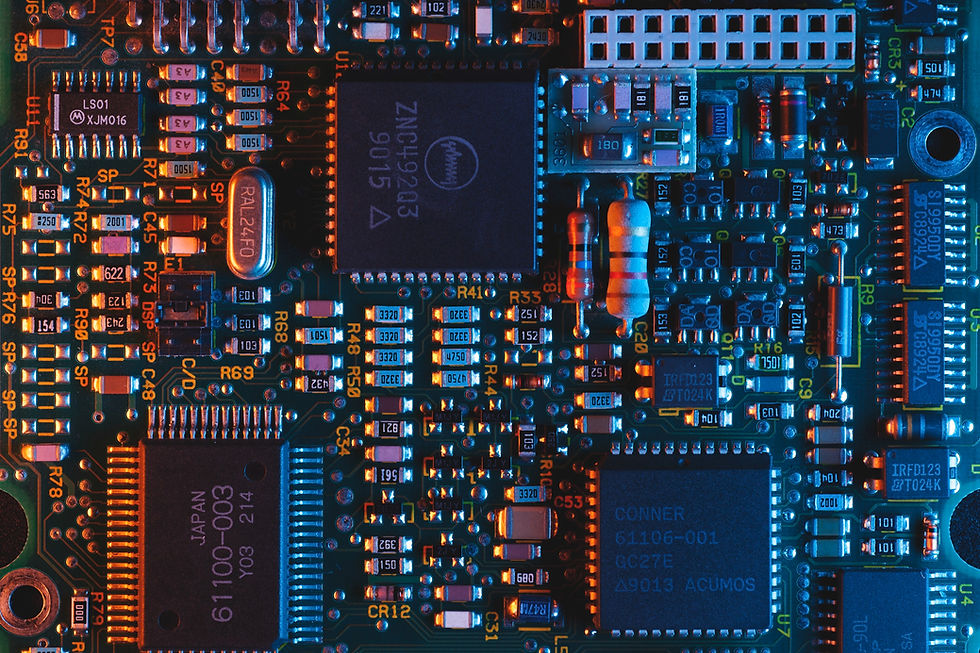For investors exploring the Artificial Intelligence sector it helps to have a clear understanding of the vocabulary that defines this space. Whether you're considering investments in startups or tech titans, this glossary will help you with the essential AI terminology to better navigate the AI investment landscape.
AI Terminology
Core AI Concepts
Artificial Intelligence (AI): At its core, AI refers to machines or software that can perform tasks which typically require human intelligence. These tasks include reasoning, learning, problem-solving, perception, and understanding language.
Machine Learning (ML): A subset of AI, ML is the process by which computers use statistical techniques to learn from data. Unlike traditional software, ML systems improve their performance as they are exposed to more data over time.

Deep Learning: A further subset of ML, deep learning utilizes neural networks with many layers (hence "deep") to analyze large volumes of data. It's the technology behind advancements in facial recognition, natural language processing, and many other AI capabilities.
Neural Networks: Inspired by the human brain, a neural network is a series of algorithms that endeavors to recognize underlying relationships in a set of data through a process that mimics the way the human brain operates.
Algorithms: In the context of AI, algorithms are sets of rules or instructions given to an AI system to help it learn from data and make decisions or predictions based on that data.
AI Applications
Natural Language Processing (NLP): This technology enables machines to understand and interpret human (natural) languages. NLP combines computational linguistics—rule-based modeling of human language—with statistical, machine learning, and deep learning models.
Computer Vision: A field of AI that trains computers to interpret and understand the visual world. Using digital images from cameras and videos and deep learning models, machines can accurately identify and classify objects—and then react to what they "see."

Robotics: Although not exclusive to AI, robotics often incorporates AI technologies to enable robots to perform tasks autonomously. Robotics involves designing, constructing, operating, and using robots to perform tasks without ongoing human intervention.
Augmented Intelligence: An alternative conceptualization of artificial intelligence that focuses on AI's assistive role, emphasizing that it is designed to enhance human intelligence rather than replace it.
AI in Business
Autonomous Vehicles: These are vehicles equipped with AI technologies that enable them to navigate and operate without human intervention. This includes cars, drones, and other types of vehicles that can perceive their environment and make decisions.
Big Data: Refers to extremely large data sets that may be analyzed computationally to reveal patterns, trends, and associations, especially relating to human behavior and interactions. Big Data is crucial for training AI models.

Predictive Analytics: The use of data, statistical algorithms, and machine learning techniques to identify the likelihood of future outcomes based on historical data. It's widely used in marketing, financial services, and operations management.
AIaaS (AI as a Service): The offering of AI-based services through the cloud. Companies can use AIaaS platforms to experiment with AI for various purposes without large initial investments in hardware and software.
Automation: The use of AI to create systems that perform tasks without human intervention, increasing efficiency and reducing the potential for human error in processes ranging from data entry to complex manufacturing.
Emerging Trends in AI
Quantum Computing: An emerging field that, when fully realized, will significantly enhance the capabilities of AI by performing complex calculations at unprecedented speeds.
Generative AI: AI that can generate new content, from images and videos to text and music, that resembles human-created content, opening new avenues for creativity and content creation.
Edge AI: This refers to AI technologies that are processed locally on a device, rather than relying on cloud-based services. This can reduce latency, increase privacy, and allow AI applications to work in situations where connectivity might be limited.
Generative Adversarial Networks (GANs): An innovative AI technique that pits two neural networks against each other, one generating data (the generator) and the other evaluating it (the discriminator). This process can generate highly realistic synthetic data.

Reinforcement Learning: A type of machine learning where an AI agent learns to make decisions by taking actions in an environment to achieve some goals. The agent learns from the outcomes of its actions, rather than from being taught explicitly.
Neurosymbolic AI: Combines neural networks (sub-symbolic processing) with symbolic reasoning to create AI systems that can both understand and reason with high-level concepts, aiming to bridge the gap between deep learning and human-like understanding.
Ethical and Regulatory Considerations
Bias: AI systems can inadvertently perpetuate or amplify biases present in their training data, leading to unfair outcomes. Understanding and addressing AI bias is crucial for ethical AI development.
GDPR (General Data Protection Regulation): A regulatory framework that sets guidelines for the collection and processing of personal information from individuals who live in the European Union (EU). It represents a significant consideration for AI companies operating in or serving customers in the EU.
AI Governance: The idea of legal and ethical frameworks to govern the development and use of AI technologies, ensuring they contribute positively to society and do not cause harm.
Conclusion
Learning these key terms can help to not only understand the capabilities and potential of AI technologies, but also empower investors to make informed decisions about where to allocate resources in the AI space.